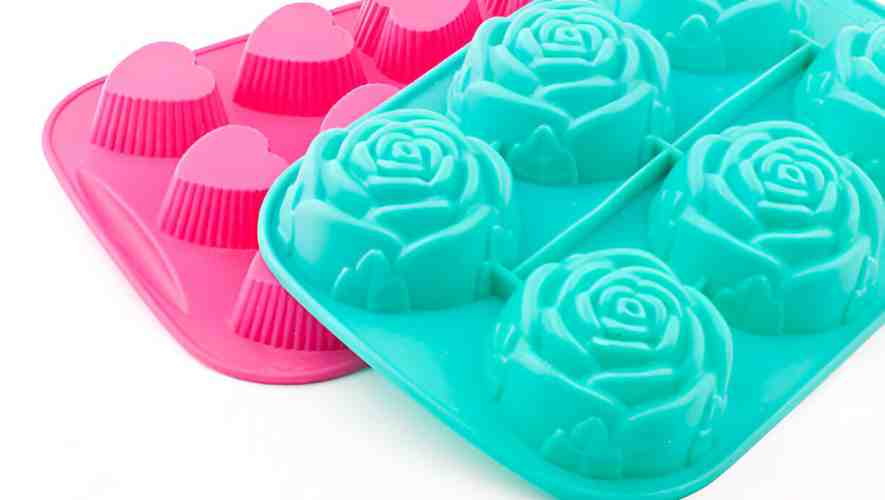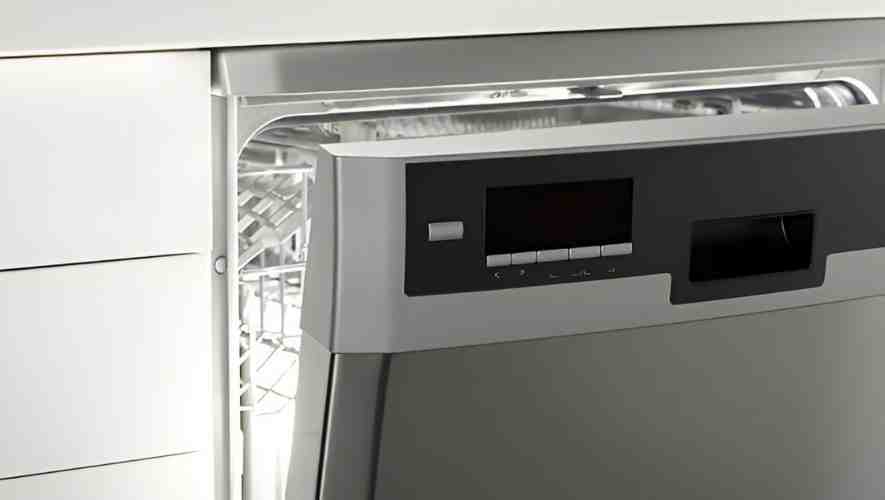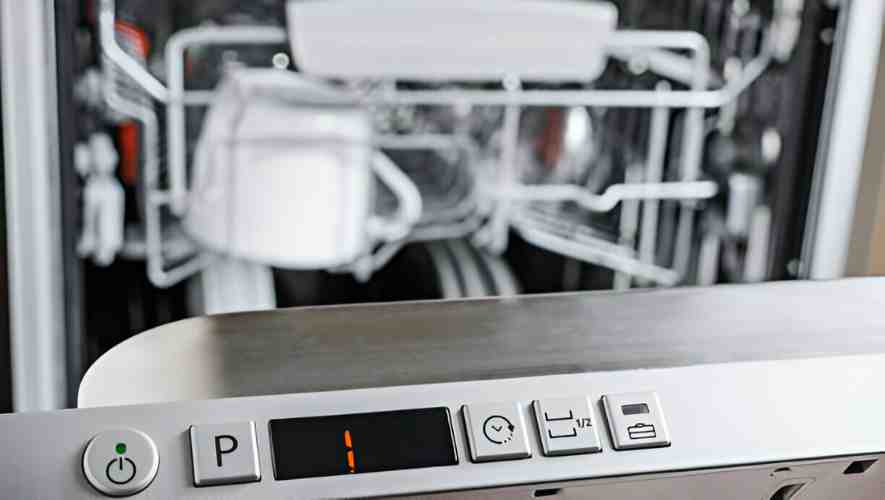You can toss your silicone molds into the dishwasher? Well, you’re in luck! It’s a common question, especially since we all love the convenience of just loading up that dishwasher and letting it do its thing. Silicone molds, those handy tools we use to bake and shape all sorts of goodies, are actually pretty tough cookies. Most of them are 100% dishwasher safe, which means they can handle the heat and the hustle of getting scrubbed alongside your regular dishes.
Cleaning your silicone is a breeze when you can just pop it in the dishwasher. This is super handy because nobody wants to spend forever at the sink, right? When you clean your silicone molds in the dishwasher, you’re giving them a thorough wash without much fuss. Just make sure to check if your particular brand of bakeware or silicone baking mats are labeled as dishwasher safe. This way, you keep your mold in top shape, ready for your next baking adventure, ensuring every dish comes out clean and safe. So go ahead, let your dishwasher do the heavy lifting and keep your silicone looking like new!
Is Your Silicone Mold Dishwasher Safe? Check Before You Clean!

When you’re gearing up to clean your kitchen or freshen up your bakeware, it’s super tempting to chuck everything in the dishwasher and call it a day. But hold up—let’s talk about whether your silicone molds are dishwasher safe and the best way to clean them!
Understanding Your Silicone Molds
First off, silicone molds are made from food-grade silicone or silicone rubber, which is known for its durability and heat resistance. This makes them a top pick for all sorts of kitchen tasks, from baking to freezing. However, before you toss them in the dishwasher, you should check the manufacturer’s instructions. These instructions are your best friend because they tell you the safest and most effective way to clean your specific type of silicone cookware.
Placement in the Dishwasher
If your silicone bakeware and silicone baking mats are dishwasher safe, placement is key. The top rack of the dishwasher is generally the safest spot. It’s farther from the heating element, reducing the risk of warping or damage from high heat. Always arrange them neatly on the rack, ensuring they’re not folded or bent, to avoid any mishaps.
Choosing the Right Detergent and Settings
When washing silicone in the dishwasher, choosing a gentle detergent is crucial. Harsh chemicals can degrade the silicone over time, reducing its lifespan and potentially affecting its color. Opt for a detergent that’s mild and effective. Additionally, use a gentle wash cycle with warm water to clean your silicone without exposing it to extreme conditions that might cause wear and tear.
Alternative Cleaning Methods
Sometimes, you might need to spot clean or address grease buildup that the dishwasher can’t handle. In these cases, washing your silicone baking mats and molds by hand in warm soapy water is the way to go. Use a soft cloth or sponge to gently scrub them. Avoid abrasive scrubbers, which can scratch and damage the surface of your silicone bakeware.
Durability and Care
Taking care of your silicone molds isn’t just about keeping them clean; it’s about maintaining their usability and integrity over time. Remember, food-grade silicone is built to last, but it still needs proper care. Regular cleaning, proper storage, and adhering to usage instructions ensure that your molds and mats stay in pristine condition, ready for your next cooking adventure.
By understanding the proper care for your silicone molds, you can ensure they remain a vital part of your kitchen arsenal for years to come. Always check if they are dishwasher safe, and if in doubt, a quick hand wash does the trick just fine!
Easy Tips for Washing Silicone Bakeware in the Dishwasher

We all want to make cleaning up as painless as possible, especially when it comes to kitchen bakeware. If you’re using silicone bakeware, you’re in luck because these pieces are not only durable but also dishwasher safe. Here’s how to make sure your silicone gets thoroughly cleaned without any hassle.
Preparing Silicone Bakeware for the Dishwasher
Before you load your silicone bakeware into the dishwasher, give it a quick once-over. If there’s any greasy residue, a pre-rinse can help. Using a sponge, wipe down the bakeware to remove any major bits of residue. This little step helps your dishwasher do its job more effectively and prevents greasy films from sticking around after the wash.
Loading Silicone Bakeware in the Dishwasher
Place your silicone items on the top rack of the dishwasher. This is crucial because the top rack is typically exposed to less intense heat and water pressure, reducing the risk of warping or damage. Arrange them evenly to ensure that water and detergent can circulate freely, giving them a proper clean.
Choosing the Right Dishwasher Settings
Select a gentle cycle for washing silicone products in the dishwasher. Silicone is heat resistant, but prolonged exposure to high temperatures can shorten its lifespan. Additionally, avoid using extra-hot settings like “sanitize” as they can be too harsh. A regular or eco-cycle with warm (not hot) water is usually sufficient for getting silicone bakeware clean.
The Best Dishwasher Detergents for Silicone Bakeware
Opt for a dish soap that’s free from harsh chemicals and toxic ingredients. Silicone is non-absorbent but using a gentle, non-abrasive detergent helps preserve its integrity and keeps it looking like new. Look for detergents labeled as “gentle” or “for delicate items.”
Post-Dishwasher Care for Silicone Bakeware
Once the wash cycle is complete, take out your silicone bakeware and inspect it. If there’s any leftover residue, a quick soak in warm soapy water followed by a gentle scrub with a sponge can do the trick. Make sure to sprinkle some dish soap directly on any stubborn spots and let it sit for about 10 minutes before scrubbing.
After washing, always dry your silicone bakeware thoroughly. This can be done by air-drying on a clean drying rack or by using a soft, non-abrasive towel. Proper drying prevents any water spots or buildup of minerals from the water.
Keeping Your Silicone Bakeware in Top Shape
Silicone is incredibly durable, but proper care and maintenance can extend its life even further. By following these simple tips for washing it safely and effectively in the dishwasher, you can ensure that your silicone bakeware remains a non-toxic and reliable tool in your kitchen adventures.
By adopting these practices, you’ll not only save time but also keep your silicone bakeware in great condition, ready for your next baking day!
Do Dishwasher Temperatures Affect Silicone Molds?

Ever wonder if the heat in your dishwasher can mess with your silicone molds? It’s a valid question, especially since silicone is such a hero in the kitchen for everything from freezing to baking. Let’s dive into how dishwasher temperatures can impact these versatile tools and how you can keep them in tip-top shape.
The Basics of Silicone and Heat
Silicone molds are prized for their non stick properties and food-safe materials. They’re built to withstand a wide range of temperatures—most can handle up to 500°F without breaking a sweat. This heat tolerance is why they’re perfect for everything from the oven to the freezer. But when it comes to the dishwasher, the story’s a bit different.
How Dishwasher Heat Affects Silicone
While silicone can take the heat in the oven, constant exposure to high temperatures in the dishwasher can eventually lead to deterioration. This doesn’t mean your molds will melt—silicone is way too tough for that. However, over time, the intense heat can make silicone less flexible and degrade its nonstick surface.
Read the Instructions
Always check the manufacturer’s recommendations before popping anything into the dishwasher. The instructions aren’t just there to take up space—they provide crucial info on how to maintain the integrity of your silicone molds. Some brands might advise against dishwasher use altogether, especially on high heat or sanitizing cycles, to prevent damage.
Choosing the Right Dishwasher Setting
If your silicone molds are dishwasher safe, opt for a lower temperature setting. Many dishwashers have an “eco” or “glass” cycle that uses cooler water. These settings are usually more than enough to get your molds clean without pushing them to their heat limits.
Cleaning Silicone Molds Without High Heat
Sometimes, it’s better to skip the dishwasher and clean your silicone molds by hand. Just wipe them down with a soft sponge and some mild cleaner. This method avoids any harsh conditions that might scratch or degrade your silicone. Plus, it’s easy to do and ensures that no food particles or oily residues stick around.
The Final Word on Dishwasher Safety
While dishwasher temperatures won’t melt your silicone molds, they can affect their longevity and performance. To keep your silicone in the best shape, use gentler dishwasher settings or hand wash them. This way, you’ll ensure your molds stay clean, intact, and ready for your next kitchen creation.
Conclusion
In conclusion, while it might be tempting to just throw everything in the dishwasher after a baking session, taking a moment to consider the best care for your silicone molds can really get them to last longer. They may earn a spot by the kitchen sink instead, where a simple hand wash is often all that’s needed. Remember, exposing silicone to high dishwasher temperatures regularly can unnecessarily accelerate wear and tear. For items like these, a bit of gentle care away from harsh conditions—like intense sunlight or the high heat of a dishwasher next to porcelain dishes—tends to be a safer bet for maintaining their condition. Plus, using affiliate links provided in this article for recommended cleaning products helps support our advice with no extra cost to you. Whether it’s ensuring durability or preserving nonstick properties, a little extra attention goes a long way in keeping your kitchen tools in prime shape.
